On a recent trip to St. Louis, I found myself with some time on my hands in central Missouri, and decided to visit the museums at Fort Leonard Wood, an Army base that serves as the home of the Corps of Engineers, the Chemical Corps and the Military Police. Each of these has a museum, and I was curious what I would find, given the very high bar set by the Field Artillery.
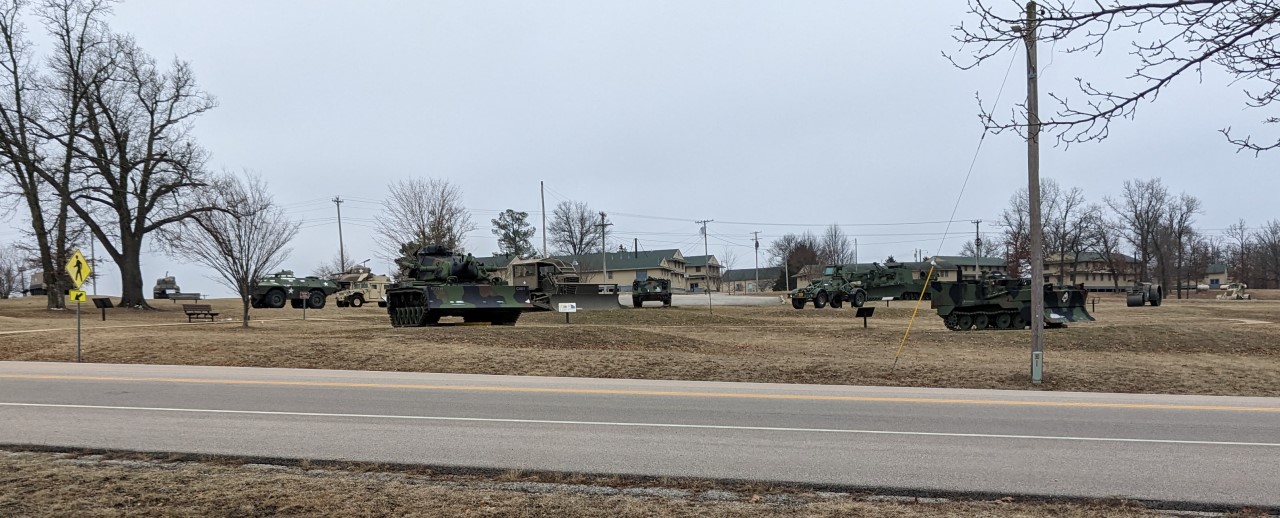
The vehicle park across the street
Getting on base was pretty easy. It's not far off I-44, about 2 hours southwest of St. Louis. I just went to the visitor center, told them what I wanted, and was directed to the self-service kiosks. The Navy desperately needs something like this to ease access to the Washington Navy Yard. Just make sure that you're a US citizen, and you shouldn't have issues. (That said, I have a security clearance, so I was presumably in the system. No idea how long it will take if you're not.) Then I drove down to the museums. The route to get there isn't well-signed, but Google Maps worked just fine.
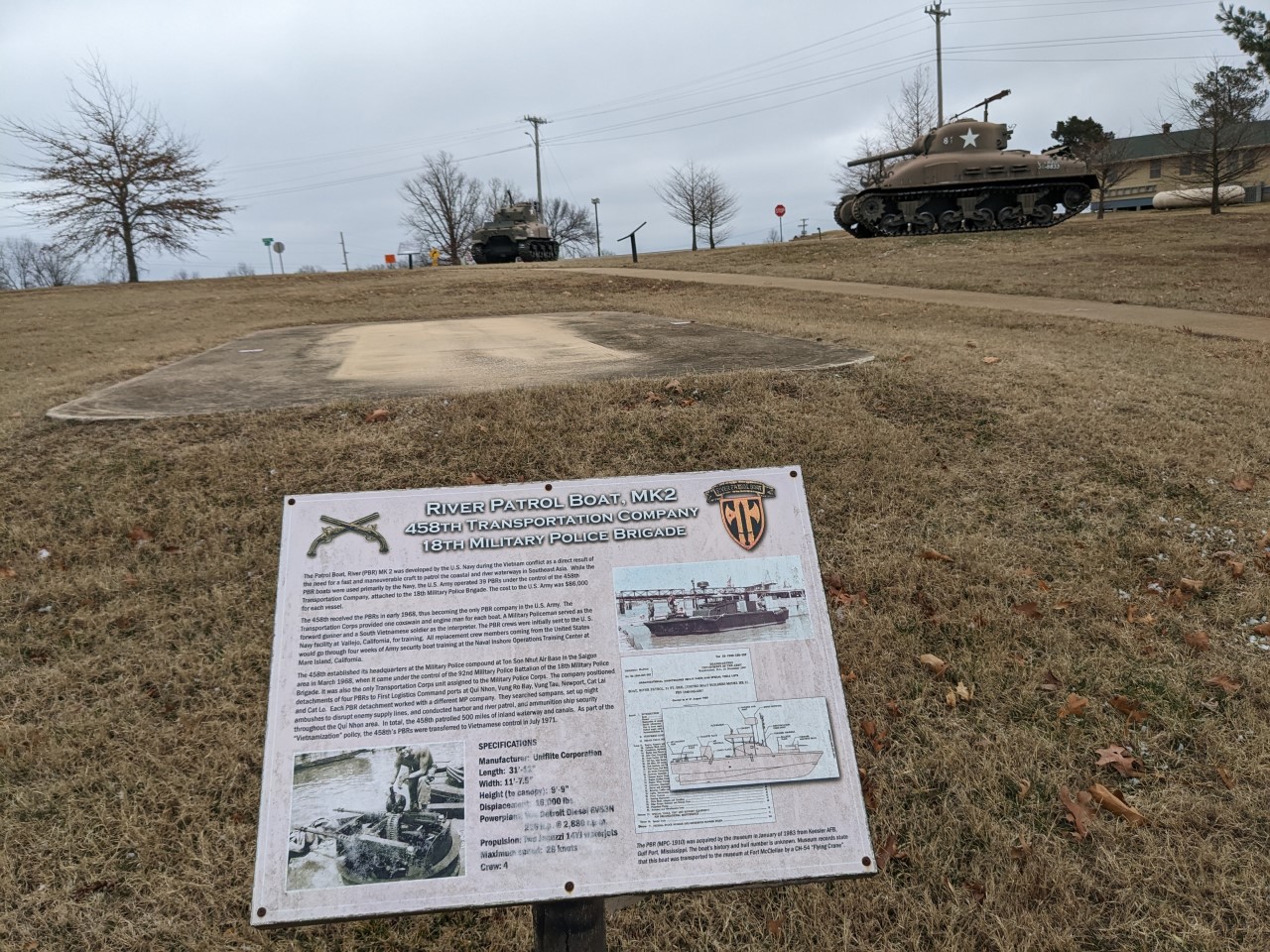
Apparently, they aren't interested in pandering to me.
All three museums are in the same building, with a small vehicle park across the street. I went over and had a look, despite the fact that it was January and quite cold, and it was a neat collection of vehicles from all three corps. There were engineer vehicles, ranging from dozers to combat engineer vehicles to a mine detection system. Most of the chemical corps vehicles were flame tanks, but they also had multiple rocket launchers, a smoke generator and an NBC reconnaissance vehicle. The MPs just had a couple of patrol vehicles. The signage said there was supposed to be a boat and a helicopter, but both were missing.
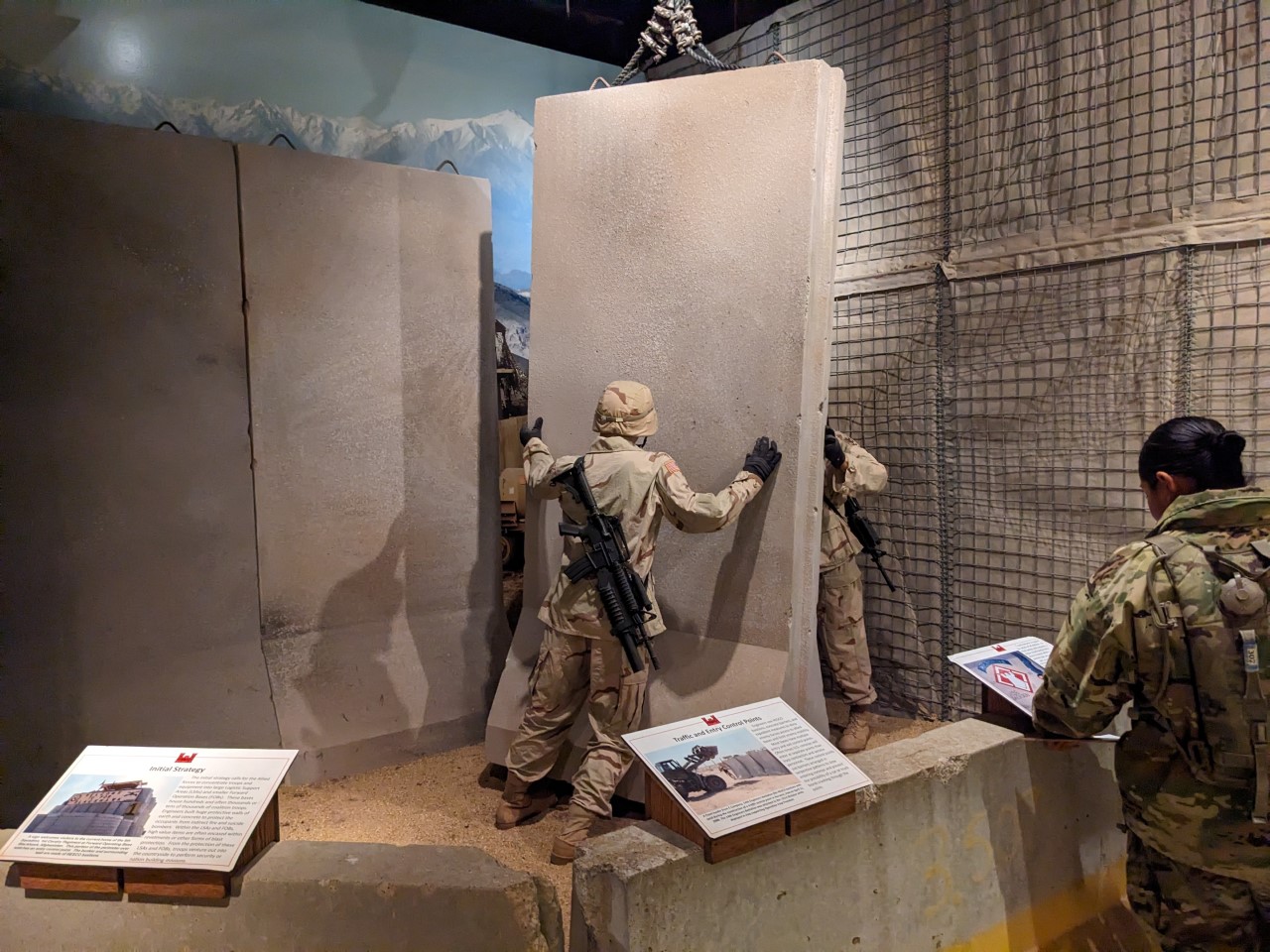
A diorama of engineers installing fortifications in Iraq
Inside, all three museums were rather odd. The engineer museum felt rather incoherent, the chemical museum was tonally baffling and both felt like old museums had been lifted up, had their signage reprinted, and been moved into a new building. In terms of how they were set up, both felt fairly reminiscent of the 45th Infantry Museum in lots of places, and while they could be excellent if they hired someone to redo them,1 they're not great right now. The military police museum had had more recent attention, including at least one digital exhibit, but it wasn't structured very well, and to be honest, the history of MPs isn't that interesting compared to the other two corps.
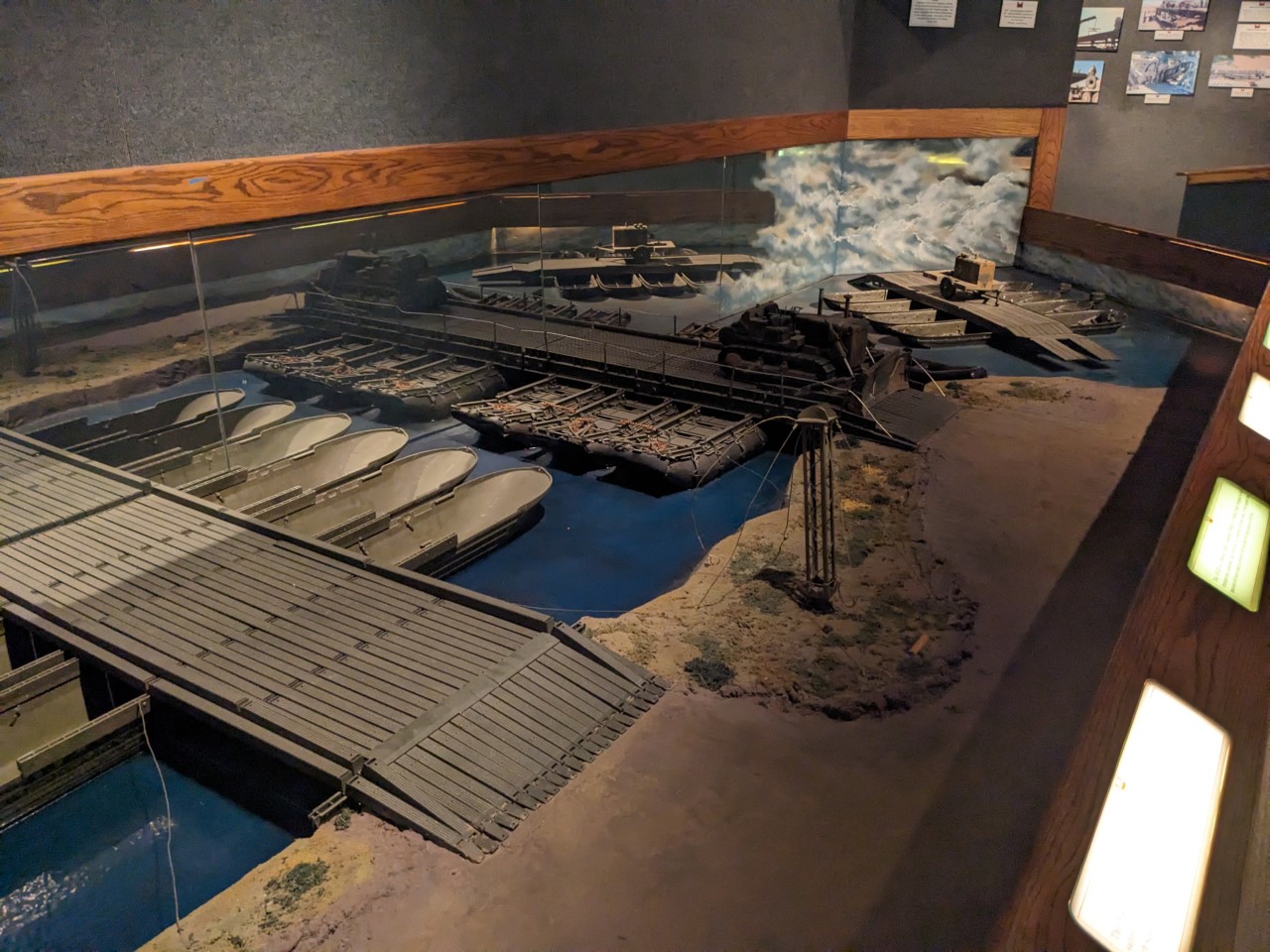
An overview of different bridging systems
The engineer museum is by far the largest, with two galleries and a lot of overlap between them. The first gallery it directs you to is strictly chronological, from the Revolutionary War through Desert Storm. Information is kind of sparse, and while there are some fairly impressive dioramas and displays (notably a Civil War-era bridging pontoon), the whole thing feels pretty dated and not particularly coherent. The second gallery covers a lot of the same material, but arranged by role/mission instead, which was a much more sensible layout, and some of the exhibits on things like bridging and mine clearance, were pretty cool. This did mean that a bunch of stuff got covered twice, particularly things like the Panama Canal. It's also newer, with some nodding acquaintance with the 21st century, although even then a bunch of stuff seemed a decade or so out of date. On the whole, the museum would be much better if they arranged the whole thing like the second gallery and tossed the chronological part, and also added some context about the broader scope of the Corps of Engineers. Also notably missing were a couple of the Corp's bigger triumphs, the Pentagon (not mentioned at all) and the Manhattan Project (alluded to, but not really discussed). Still, they did have some SADM stuff, so it kind of evens out.
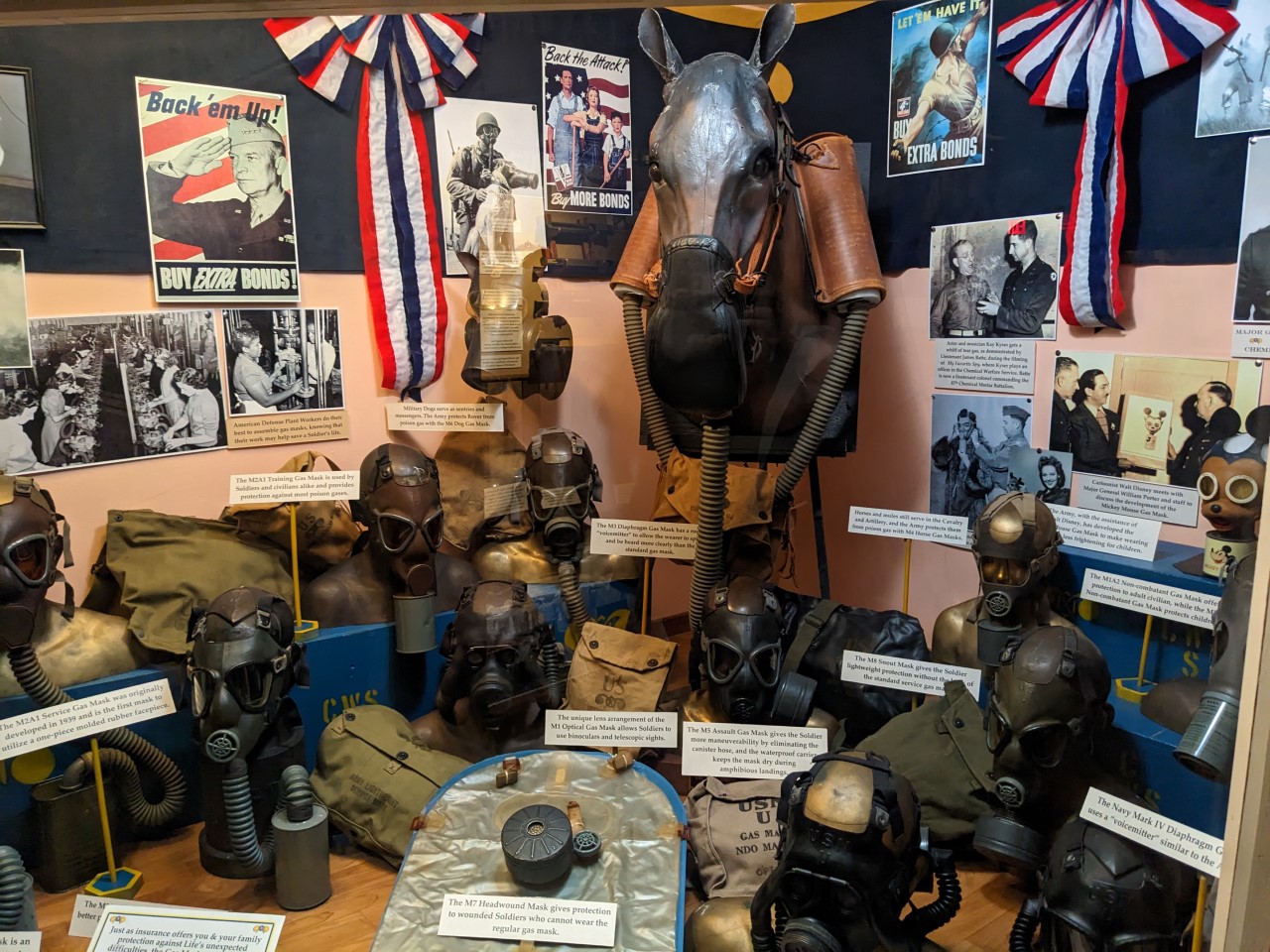
Gas masks for human, horse and dog
I would definitely rate the chemical corps museum as the most interesting of the three, both on subject matter and on the fact that it was completely bonkers on tone. The first section of the museum was superficially quite modern, with nice, clean signage, but when you read it, it feels like it was written by someone from the 50s at the latest, with a definite air of "isn't chemical warfare neat?" that I can't see anyone trying today. I suspect that the museum is an extremely light refresh of a much older museum, given things like a discussion of the chemical weapons experimental work done at American University without any mention of the resulting environmental problems and signs in the galleries that read like sponsorship signage, but printed just like everything else. It's wild.2
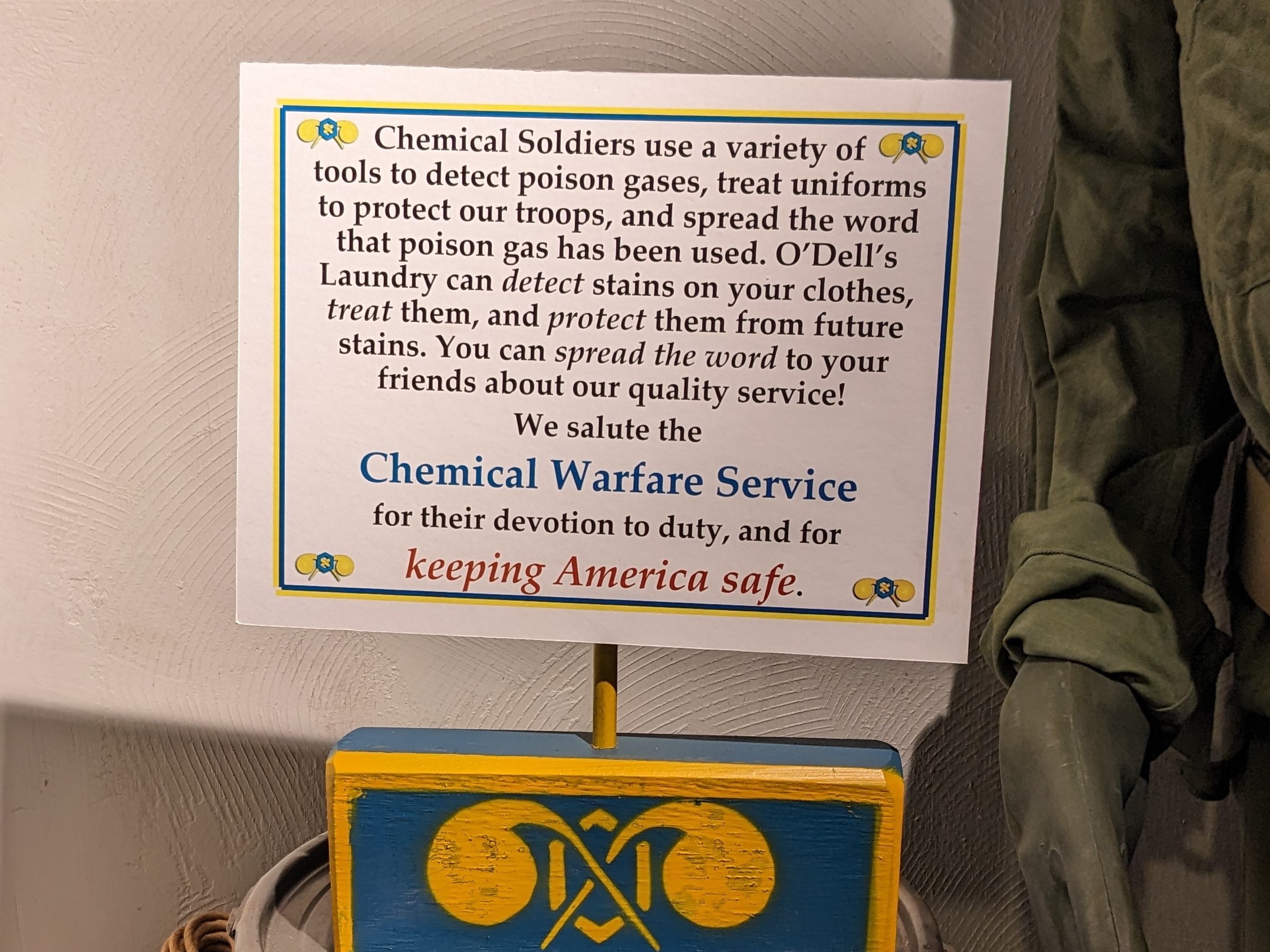
I was not joking about this being wild
But there's also just a bunch of really cool stuff. The chemical corps is responsible for detecting and protecting against chemical, biological and radiological threats, and they used to also have responsibility for smoke generation, flame weapons, and deployment of chemical weapons. There's lots of stuff for all of these missions, and while that makes the displays rather busy, there's lots of interesting artifacts, like a gasproof box for carrier pigeons and a protected bassinet from the Cold War. I do wish they'd done a better job of making a coherent narrative out of it rather than throwing it all in chronological order, but such is life. Both biological warfare and chemical decontamination were rather poorly served, at least in part because those are somewhat later than the early 50s date I think a lot of the exhibits are from. There's some coverage of later wars, although nothing like WWI and WWII's coverage (there's an impressive walkthrough trench section, although I wish they'd done more than just have it there) and a big section on the chemical corps' participation in responding to potential NBC attacks in the US. On the whole, a neat experience, although more for the context than the text.
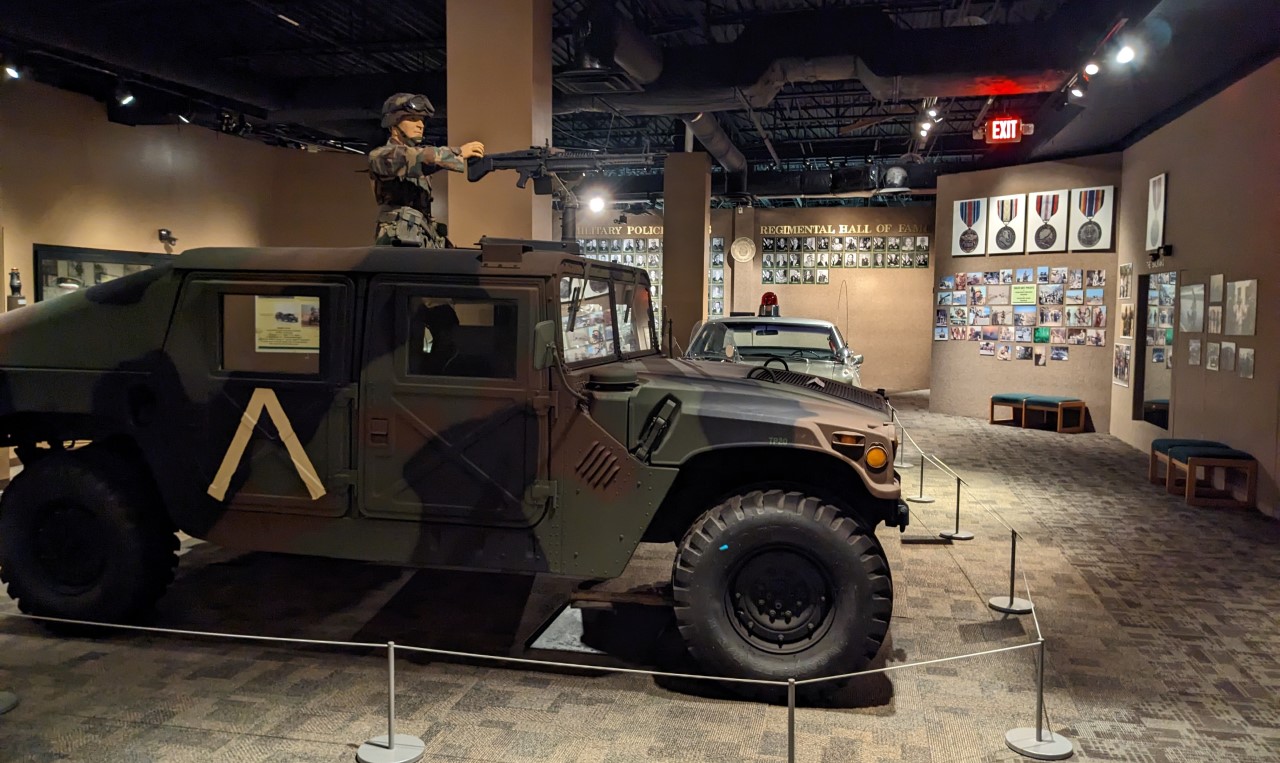
The Military Police Museum had apparently been the beneficiary of an overhaul sometime this century, although it had the disadvantage of having by far the most boring subject matter of the three. They at least made an attempt to reach people who knew nothing about the military police, talking clearly about the various roles the MPs play in the Army, although there was quite a bit of inside baseball about things like uniforms and insignia that I definitely didn't care about. It wasn't bad, but it's definitely the one to miss if you're short on time. I was there for two hours, and saw all three museums, although I wouldn't have minded another half-hour or so. There's also apparently a section of the museum on the history of Fort Leonard Wood itself, although I'm not sure where.
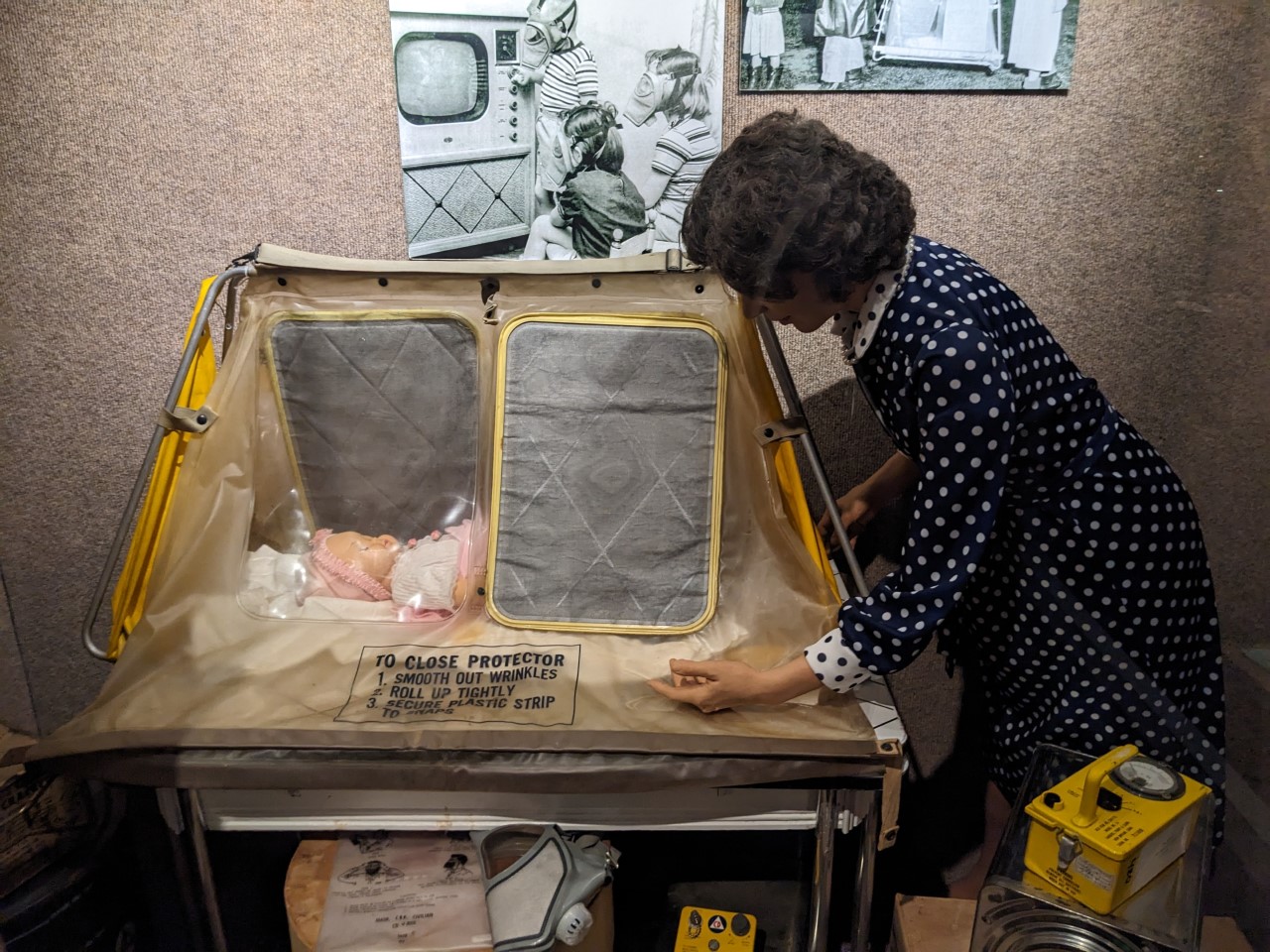
How to keep your baby safe during nuclear or chemical warfare
All of that said, I do think these museums are basically doing what they're supposed to. Fundamentally, they're there as training aids for new soldiers of the relevant branches, and the Engineering museum was full of soldiers very obviously fresh out of boot camp (the haircuts gave them away) doing a worksheet. With that background, the lack of introductory material for the general public is more forgivable, particularly given that the only thing of particular interest within about 50 miles is Missouri University of Science and Technology3 at Rolla, just up I-44. If you're a student there, take some time and go. If you're passing through on 44 and have the time, there are definitely worse ways to spend it. It's marginal if you're in St. Louis, and probably not worth the trip otherwise. In some ways, that's a pity, as two of the museums could be amazing with a bit of work.
1 For a first choice, pick whoever did Fort Sill. For a second choice, I am available. ⇑
2 The museum was moved from Fort McClellan to Leonard Wood in the late 90s. The signage doesn't look that old, but I wouldn't be surprised if the text dated back to the previous museum, which may have been established in the 50s. ⇑
3 An excellent school, and any readers contemplating an engineering major should give it a look. Any readers who are there should say hi in the comments. ⇑

Comments
The River Patrol Boat, MK II? This is a newest model, obviously operating in stealth mode.
@bean: "Just make sure that you’re a US citizen, and you shouldn’t have issues."
And if one is a dangerous Italian, what kinds of issues should he have?
Their website is extremely unclear about non-US citizens who are trying to visit the museums. I'd suggest contacting the visitor center ahead of time to figure out what the rules are.
Thanks.
BTW, the chemical corps museum has anything about Bari?
I didn't see anything about Bari, but I also wasn't looking super closely through that part. The museum was plausibly put together before that stuff was declassified, and chemical weapons accidents are...not the sort of thing that museum talks about.